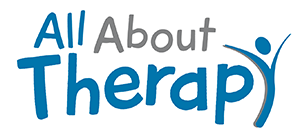Most of us know that children learn best through play. But what if your child has a physical or intellectual disability, which hinders their ability to play actively on a playground? This is a disadvantage for some that can be greatly helped by consistent occupational therapy. Most OT offices have an indoor playground structure, but a professional occupational therapist will also know how to use a traditional outdoor playground to help a child learn to navigate their surroundings.
Here are some of the types of playground equipment used in OT and their therapeutic advantages:
1 – Slides Use of a slide greatly helps in the development of a child’s sense of balance and spatial orientation (vestibular system). In a controlled environment with safety mats, a therapist can aid a child in using the slide feet first sitting, laying down, and on the tummy. Using the stairs or ladder up to the slide is a challenge for most special needs children. This task requires practice to learn how to shift body weight from foot to foot and balance.
2 – Climbing Wall Using a climbing wall builds strength in many areas, especially in the arms, legs, and core. This activity requires motor planning, sequencing, and coordination between hands and feet.
3 – Swings There are many types of therapy swings, including hammock-style, platform, large ball, and bolster (such as a horse, ridden straddled). Each has particular benefits, but all help strengthen the vestibular system, improving a child’s sense of balance and spatial orientation. For many on the Autism Spectrum, the brain pathways that register the movement of the body through space and also register dizziness are not automatically functioning. Consistent therapy with swings can help the brain form those pathways.
4 – Ball/Foam Pit Usually a turn in the ball or foam pit is perceived as fun by a child, but it accomplishes so much! Jumping in and then climbing out uses many muscle groups together, especially the core. At the same time, the child is receiving sensory input from being surrounded by the balls or foam. This contact is very helpful for children with Sensory Processing Disorder. Often this activity can be used as a reward (since it’s fun) for a child completing less desirable tasks.
5 – Mats and Exercise Balls Core strength is the foundation for many activities children are expected to accomplish in time, such as writing, climbing stairs, sitting in a desk, and jumping. Many special needs children have low muscle tone and very poor core strength. Core exercise for these children is critical and can be accomplished in OT on a playground setting on a mat. A good beginner exercise is crawling, and the therapist may lead a child to crawl through a caterpillar-type tube. Sitting or lying on a balance ball on a mat also helps with strengthening and proper posture. A more challenging core exercise is wheelbarrows – the therapist holds the child’s legs up while the child “walks” with his hands or forearms on a mat.
Consistent occupational therapy sessions with playground equipment can enable children to be more confident and active. Being able to play on a traditional playground with peers will lead to better social interactions, and physical and emotional health. If you would like to find an occupational therapist with experience in playground therapy, contact us today at 919-448-6018
